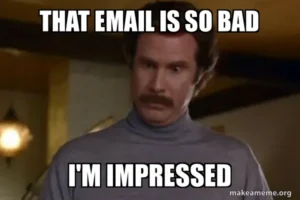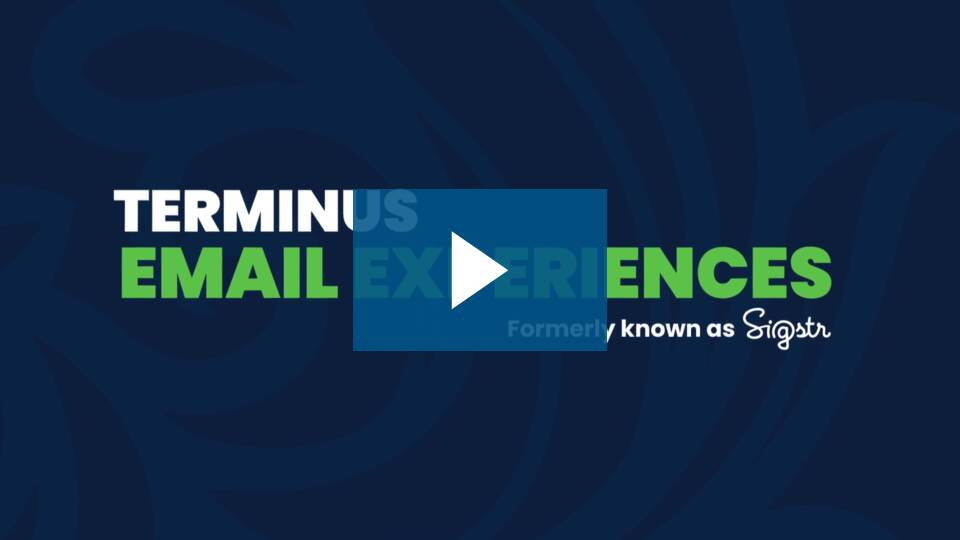This is the third article in Skalegrow’s series on B2B growth hacking. I suggest that you give the first two a read. Here are the links:
B2B Growth Hacking – 11 Tactics To Explore
B2B Growth Hacking Tactics To Explore – Part 2
In this blog post, we will learn 7 more B2B growth hacks that will help you stay ahead of your competition. While some might be known to you, there will be many that even experienced marketing leaders might not be aware of.
B2B growth hacking – 7 tactics you should try
Here are the 7 B2B marketing hacks we will be covering:
- Grow with a lean marketing team
- Leveraging website traffic to grow on YouTube
- Spy on your competitors’ emails to grow
- Video emails
- Content gap analysis
- Email signature marketing
- Zero-click content
1. Grow with a lean B2B marketing team
We all have seen it. Whether you are a founder, marketing leader, or marketing manager, you have faced challenges such as:
- Limited budgets
- Not getting approvals for new hiring
- Inability to scale marketing efforts owing to inadequate resources

Source: makeameme.org
One of the ways to overcome this is to build a lean B2B marketing team, despite the tight budget you have.
I believe that the essential members of a lean marketing team are:
- SEO content writer
- Social media manager
- Video editor/graphic designer
- Website developer/manager
- Email marketing/demand generation manager
I have explained this in detail in one of the other articles. Here is the link to the same:
How to structure a lean B2B marketing team if you are tight on budget
Now, if you think a 5-member marketing team is not lean enough, you can consider cutting down on some of the resources depending on what your marketing goals are.
For instance, if your website is not complex, you might not need a full-time website developer on your team. It might make more sense to outsource your development.
You can have the same vendor support any changes you need to make to the website as you go. This model in most cases is going to be more economical than having an in-house person.
You can also consider outsourcing some of the other activities.
For example, for creating videos, you need multiple people (content writer, video editor, etc.) to work together, and they come at a price. You also need a subscription to multiple tools – such as video editing software like Adobe Premiere, a stock image/video database like Shutterstock, a graphic design tool like Photoshop, etc.
In such a scenario, it might make more sense to outsource video creation – from a cost as well as convenience standpoint (check out our video marketing services if you are thinking of outsourcing videos).
In short, do a cost-benefit analysis of having resources internally vs. outsourcing your marketing activities. In addition to cost, be sure to consider quality as a parameter.
2. Leveraging website traffic to grow on YouTube
This growth hack works best if your website is getting a good amount of traffic already (I will show you a workaround if your traffic is low at the end).
It involves embedding YouTube videos in blog posts and other web pages that are already getting a good amount of traffic.
But wait. How does this help you grow on YouTube?
Here’s the thing. Say, one of your blog posts gets 1000 users every month. If 5% of the users click on the video embedded on the page at least once, you get 50 views for the video every month (this count can be validated on the YouTube analytics dashboard).
Think about doing this for multiple blog posts and pages. You have the potential to generate hundreds (if not thousands) of views for your channel every month. This offers various other advantages such as the following:
- As the videos get more views, YouTube will further push them organically – leading to more views.
- Some of the viewers will also end up becoming subscribers on YouTube.
But as I mentioned, this needs you to have multiple pages with good traffic. The more you have, the better.
You also need to follow a few best practices while embedding videos such as:
- Embed them at the top or at least after the first few paragraphs. This is because the % of people seeing your content goes down as you scroll down the page (you can check this using a heatmap tool like Hotjar).
- Make sure the videos are related to the content of the page.
Now, the next question is, what if you don’t have a related video that you can embed?
Well, then you have to create one.

Source: makeameme.org
Painful. But worth it!!
Here is a more burning problem. What if you don’t already have good traffic?
In that case, you can still try this hack with a slight tweak. Only that it is going to take more time to work.
This involves you creating website content (preferably blog posts) around SEO-relevant topics. You also need to create related videos that can be embedded in the blog posts.
3. B2B growth hacking by spying on competitors’ emails
This is a sneaky hack that allows you to steal your competitors’ email marketing strategies (and their marketing tactics) without them even knowing it.
But you might be wondering.
Isn’t that simple? Can’t you simply subscribe to their email using a separate email account? Wouldn’t that make sure the competitor doesn’t get to know?
Here’s the thing.
Subscribing to competitors’ email using an ordinary email ID will only give you very basic information like what content they are using, time of sending, sender name, etc (that too not in a consolidated manner).
In addition, if your competitor is sending emails very frequently, your inbox will be full of emails – which you need to analyze manually every time to uncover insights.

Source: tenor.com
What if there is a better way to do this?
I am referring to using email tracking and monitoring tools. And my personal favorite when it comes to such tools is SendView.
It gives you a ton of insights into your competitors’ emails such as:
- The ESP (Email Service Provider) they are using.
- Metrics such as average subject line length, word count, link count, image count, etc.
- Spam score.
- Responsivity.
- A word cloud of the frequent terms they are using in the content.
Check out the below video to learn more about the tool:
Now, how effective a growth hack this becomes will depend on how you use the information you get using the tool.
Here are a few tips on how to do this:
- Learning about the tool your competitor is using will give you input for choosing the right tool for your email marketing efforts.
- You will be able to derive inspiration from the number and frequency of words they are using in the content and subject line.
- You can come up with best practices for creating email content based on the type of content the company you are spying on is using.
- Adopting best practices on the frequency and time of sending of their emails.
You can also use this tactic to learn from some of the top brands in the world (and not just competitors).
Related: 9 Ways To Steal Your Competitors’ Marketing Advantage
4. Video emails – an excellent B2B growth hack
Let’s admit it. Most B2B emails look the same.
A lot of them have large chunks of text that no one wants to read. A vast majority of them go something like this:
“Hi {first name},
My name is John, I am the {sender designation} at {sender company name}. I am reaching out………”
Ugh!!! Boring!!

Source: makeameme.org
Whether the email is from a B2B business or a B2C business, recipients want to be educated, entertained, or given an offer valuable to them. And text-based emails have become outdated for all of these.
Not that they don’t work. They just don’t look cool anymore. They don’t help you stand out among the noise.
What if there is a better way to do this?
I am referring to video emails.
Video emails are an excellent tool for:
- Increasing the engagement on your emails.
- Building a better connection with your customers and prospects.
- Giving a more personalized touch to your emails.
Using a specialized tool for video emailing helps you send emails at scale. It also gives the necessary analytics at a consolidated level. A dedicated video emailing tool also helps to improve your deliverability compared to embedding videos in an ordinary email automation tool.
Some of my favorite video emailing tools are:
- Bonjoro
- Lemlist
- Hippo Video
Check out the below video from Bonjoro to learn more about how video emailing works.
Most of these tools also come with out-of-the-box integrations with popular marketing automation platforms like HubSpot or Salesforce. This makes it easy for you to organize your leads.
With increased open rates, higher engagement, and better response rates, you will make your email marketing efforts more effective – leading to faster growth in comparison to using an old-school and boring method of email marketing.
5. Content gap analysis and how it can help in B2B growth hacking
Content gap or keyword gap analysis is the exercise of identifying keywords your competitors are ranking for but you are not.
Wondering how this can be useful?
If your competitor is ranking for a keyword, it is highly likely that it is relevant for you too. But you need to make sure that you filter out all irrelevant keywords from the list you obtain.
The next question is, how do you find these keywords?
You can manually enter the URL of all competitor pages and do a comparison using Excel to find keywords they are ranking for but your website is not. But as you can imagine, this is a tedious process.
SEO tools like Ahrefs and SEMRush have made this easy for us.
As an example, let us try to do a keyword gap analysis between Avoma and Calendly using SEMRush (assume that Avoma is your business and Calendly is the business you are comparing it against).
Here is the screenshot I obtained that shows the first 15 keywords Calendly is ranking for but Avoma is not.

The filtering out of irrelevant keywords has to be done manually. If you have way too many keywords on the list, consider comparing your website with specific pages of the competitor (say their core product page). This will help you narrow down the list of keywords to more relevant ones, and hence reduce the time required for manual filtering.
You can do this comparison with more than one competitor simultaneously by entering more competitor URLs in the comparison section of the tool. You can also compare with popular blogs in your space to uncover keywords your competitors might have missed (for example, if you are in the AI and ML space, Hugging Face is a blog and community that you can look at).
Now, you need to follow the basic principles of SEO and keyword analysis here as well. You should ideally go after keywords with high volume and low competition (this can also be used as an easy criterion to filter out irrelevant keywords).
Okay. You got the keywords. What’s next?
You need to create quality content around them (well, that was obvious, wasn’t it?).

Source: makeameme.org
Educational blog posts are ideal because they tend to rank faster. So apply this hack to identify relevant keywords to create high-quality content around.
For further reading: Getting Started With SEO-led Content In 3 Days
6. Email signature marketing
This hack comes with a couple of caveats. It works well only if:
- You have a large number of employees, especially in customer-facing roles.
- Or you send out a large number of emails to customers and prospects regularly.
Email signatures remain one of the most ignored sections of marketing communication where almost everyone follows the same pattern.
If sent from a person’s email box, the signature will have his/her name, company name, address, or at max links to the sender’s or the company’s social media handles.
If it’s from an email automation tool, the footer will also have the unsubscribe link and address of the sender to comply with GDPR and CAN-SPAM laws.
That’s what is called BORING!!

Source: makeameme.org
Adhering to data privacy laws is a must. But that doesn’t mean that you make your signatures and email footers dull.
Plus, you are wasting marketing real estate – which you could potentially use for a wide variety of promotions rather than just including social media handles.
Here are a few ideas for using your email signatures to promote your business:
- Promote an upcoming event or webinar.
- Distribute a latest report, whitepaper, or survey you published.
- Add the news of a recent logo you won or funding you received.
- Link a thought leadership article or podcast appearance of your CEO or key leaders.
- News of an external award or competition one of your employees won recently.
The idea here is to use this space to promote something educational or newsworthy, and not push people to buy something.
You can do all of this manually by asking your employees to add the relevant links to their signatures. But that will not give you the relevant metrics to analyze the results at a consolidated level. It will also be a time consuming endeavor.
That’s where email signature tools come in. They help to automate the entire process.
One of the most popular email signature marketing tools in the market is Terminus Email Experiences (previously Sigstr). Check out the below video from Terminus to understand how email signature marketing works:

Here is a list of a few more tools you can use for this:
- Mailtastic
- Opensense
- Newoldstamp
- Xink
As I always say, make sure to evaluate a tool before purchasing one. But beyond doubt, doing email signature marketing at scale is a great way to bring easy traffic and attention to your website and content, especially if you have hundreds or thousands of emails going out every day.
And the best part? You get these results without having to do much additional work (you just have to spend time designing a few email signature variants).
7. Zero click content – a futuristic B2B growth hack
The days of generating website traffic at any cost are soon going to be history.
Wondering why?
Because Google’s Search Generative Experience (SGE) is all about giving the user the best piece of information during a search by leveraging AI. And this information will be more often served in the search engine interface itself.
Check out the below video from Skalegrow to learn how SGE will change the way search and content are delivered:
Marketing experts predict a 15 to 20% dip in website traffic due to this. Whether you like it or not, there is a high chance of this happening.
So what does this mean for B2B marketers and how should they respond?
The first and foremost thing is to focus on user-specific queries (rather than just keywords) that help searchers find the information they are looking for faster (without having to click through to multiple websites). Since Google will use AI to take the closest answer to a user’s query from your content and display it in the search results, your content should answer specific questions related to the topic.
So, rather than ‘tricking’ people into clicking on search results to visit your website, try creating content without keyword stuffing, unnecessary & filler words, unrelated points, etc. This concept of optimizing content for users and not clicks is called Zero Click Content.
Essentially, you need to shift your mindset from ‘traffic at any cost’ to ‘relevant information at any cost’.
To learn how to apply zero click content effectively to your marketing efforts, check out the below article:
Zero-Click Content – How To Leverage It In The Era of Dark Social
So start modifying your marketing activities today to adapt to the AI era.
Skalegrow – B2B marketing agency
With marketing getting tougher and tougher, every wrong foot you make might hamper your growth. What you need is the right guidance and a helping hand. This is where Skalegrow can make a sea of difference.
Skalegrow helps IT, tech, SaaS, and embedded systems companies leverage new-age marketing tactics to grow their business. Check out the below intro video to learn more about what Skalegrow brings to the table:
Our services include content marketing, SEO, graphic design, video marketing, LinkedIn marketing, email marketing, performance marketing, and website management. Write to us at info@skalegrow.com or visit our services page for more details.
About the author

Naseef KPO is the Founder and CEO of Skalegrow. He comes with rich experience across multiple areas of B2B marketing including content marketing, demand generation, SEO, account-based marketing, marketing analytics, revenue attribution, marketing technology, etc. He writes thought-provoking and relevant articles on The Skalegrow Blog and his weekly LinkedIn newsletter Elevate Your Marketing.
Prior to starting Skalegrow, Naseef led large marketing teams in multi-million dollar B2B organizations where he made significant contributions to the topline growth of the business. He has also appeared on numerous podcasts where he shared his thoughts on trending marketing topics such as the application of AI in marketing, startup marketing, ABM, and B2B content marketing, just to name a few. Being the founder of Skalegrow, he is currently focusing on helping its clients stay ahead of their competition by using innovative yet practical marketing tactics.
You can connect with Naseef KPO on LinkedIn.


